Espresso machines are a key part of crafting the perfect cup of coffee, but they need regular maintenance to perform at their best. One of the most crucial aspects of espresso machine care is descaling. Whether you’re a home barista or a professional café owner, knowing when and how to descale your espresso machine can significantly impact the quality of your coffee.
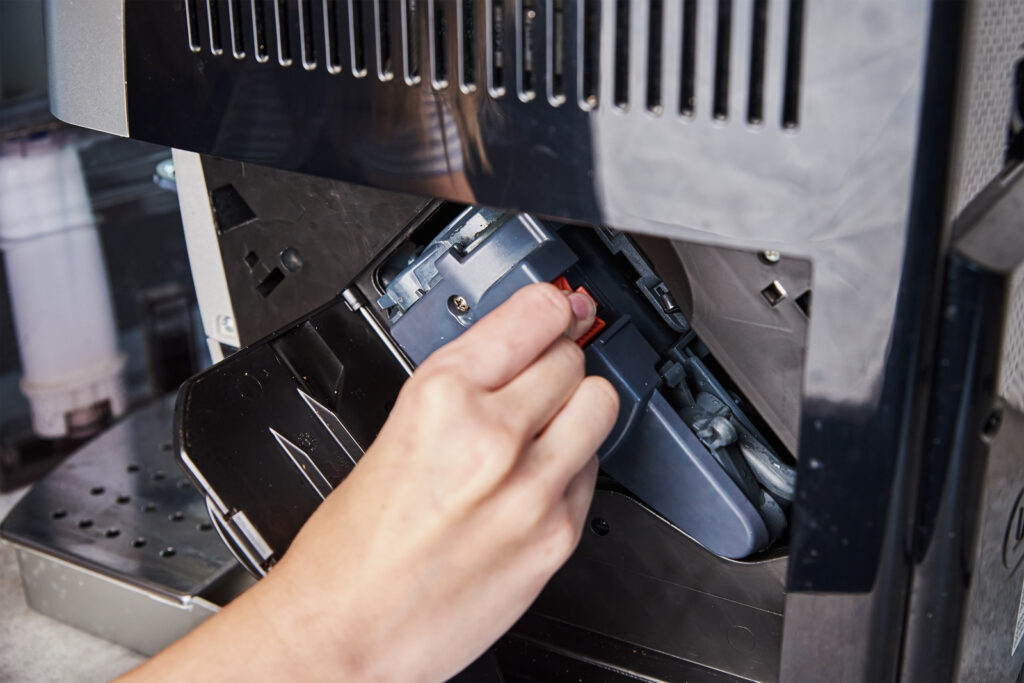
In this guide, we’ll learn when to descale an espresso machine and the essential details of descaling, from identifying when it’s needed to choosing the right products, so you can keep your espresso machine in top condition.
Why Descaling is Essential for Your Espresso Machine
Descaling is the process of removing mineral buildup (commonly called “scale”) from the internal components of an espresso machine. This buildup is primarily composed of calcium and magnesium deposits, which accumulate over time when the machine heats water. If left untreated, scale can hinder the performance of your espresso machine, reduce its lifespan, and negatively impact the taste of your coffee.
Understanding the Impact of Scale Build-up on Espresso Machines
When scale builds up inside your espresso machine, it can lead to several problems:
- Clogged Pipes and Valves: Mineral deposits can restrict water flow, making it harder for the machine to pump water effectively.
- Reduced Heating Efficiency: Scale can insulate heating elements, causing them to work harder and potentially overheat.
- Altered Coffee Flavor: Mineral buildup can alter the taste of your espresso, leading to inconsistent flavors and an undesirable aftertaste.
- Higher Energy Consumption: Scale buildup forces the machine to use more energy to maintain the correct brewing temperature.
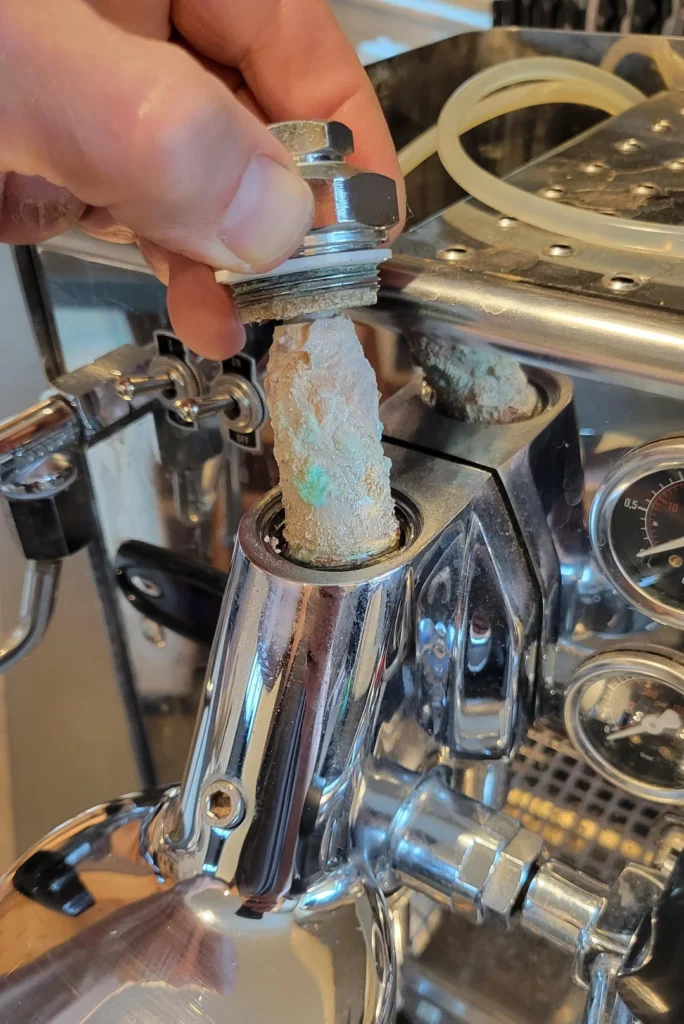
Understanding these effects highlights why regular descaling is crucial for maintaining your machine’s performance and ensuring you get the best-tasting espresso every time.
How Often Should You Descale Your Espresso Machine?
The frequency of descaling depends on several factors, including water quality, machine usage, and the type of espresso machine you own.
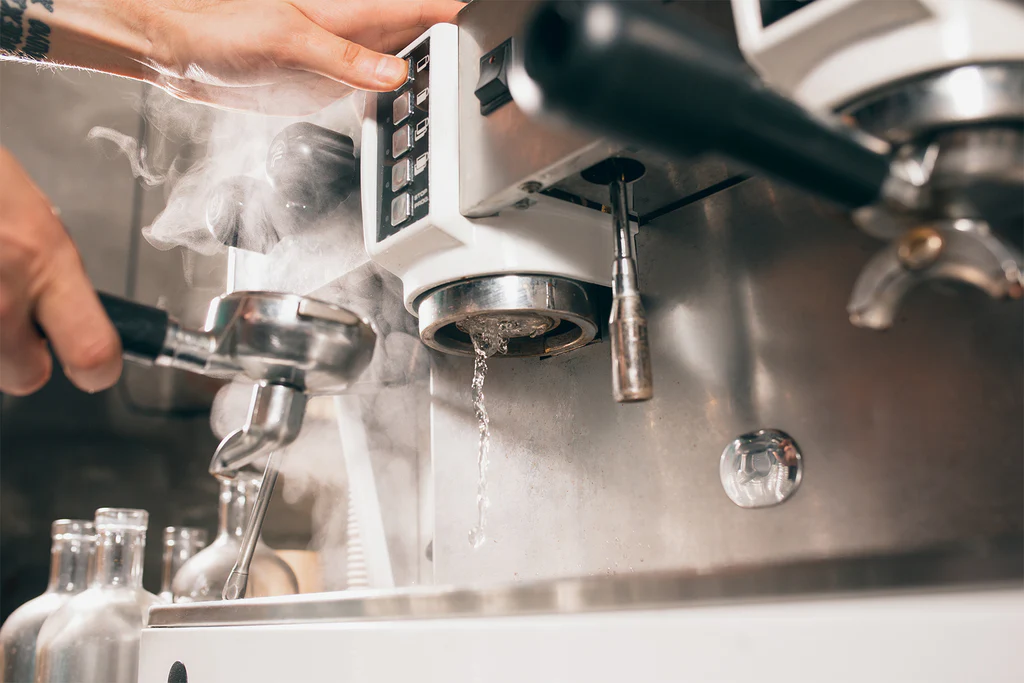
Factors That Affect the Frequency of Descaling
To determine when it’s time to descale, consider the following factors:
- Water Hardness and Its Role in Scale FormationWater hardness refers to the concentration of minerals like calcium and magnesium in your water supply. If you use hard water, scale will build up more quickly, necessitating more frequent descaling. Consider using a water hardness test strip to check your water and, if necessary, use a water softener to minimize scaling.
- Frequency of Use and Coffee TypeMachines used multiple times a day will accumulate scale faster. Additionally, certain coffee types, such as those with high oil content, can contribute to buildup, making descaling more frequent.
Signs That Indicate It’s Time to Descale Your Espresso Machine
Knowing the signs that your espresso machine needs descaling can help you avoid issues before they escalate. Watch out for the following indicators:
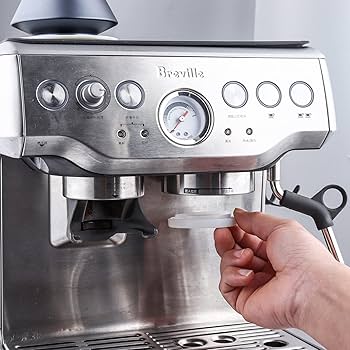
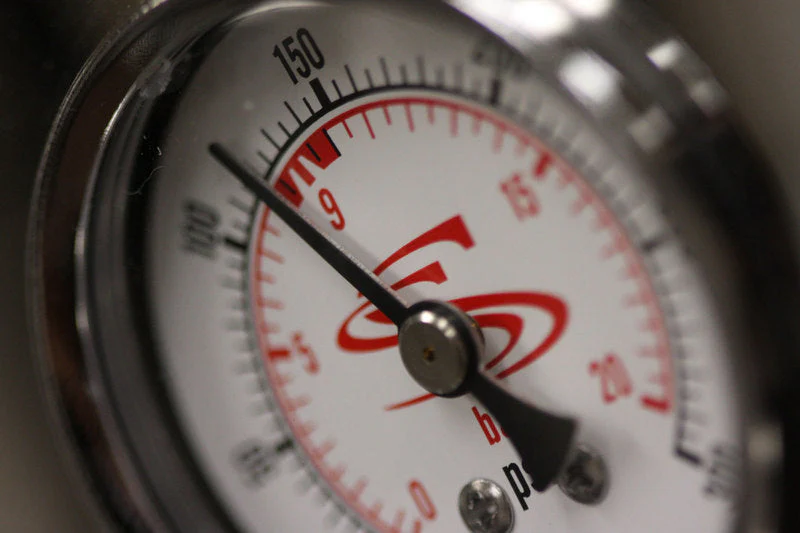

- Reduced Water Flow If the water flow through your machine seems weaker than usual, it may be a sign of scale buildup in the pipes, reducing the efficiency of water circulation.
- Strange Tastes in Your Coffee A metallic or bitter taste in your espresso is often a sign that minerals have started to affect the flavor profile. Regular descaling can prevent these unwanted tastes from creeping into your coffee.
- Unusual Noises During Brewing A machine struggling with scale buildup will often make odd noises during brewing. If your espresso machine starts making gurgling or knocking sounds, it’s a good indication that it needs descaling.
- Error Messages and Indicator Lights Many modern machines have built-in descaling indicators. If your machine displays an error message or a dedicated descaling light turns on, follow the manufacturer’s instructions to descale immediately.
How to Properly Descale an Espresso Machine: Step-by-Step Instructions
Proper descaling involves several steps to ensure all components are thoroughly cleaned without damaging the machine. Here’s how to do it:
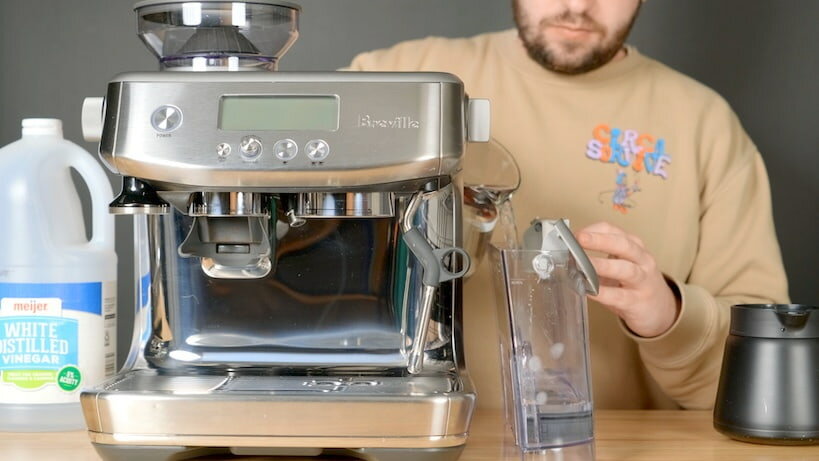
Gathering the Necessary Equipment and Descaling Solution
Before starting, gather the following:
- A descaling solution (preferably one recommended by your machine’s manufacturer)
- A large container to catch the descaling solution as it exits
- Clean water for rinsing
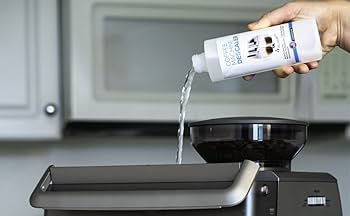
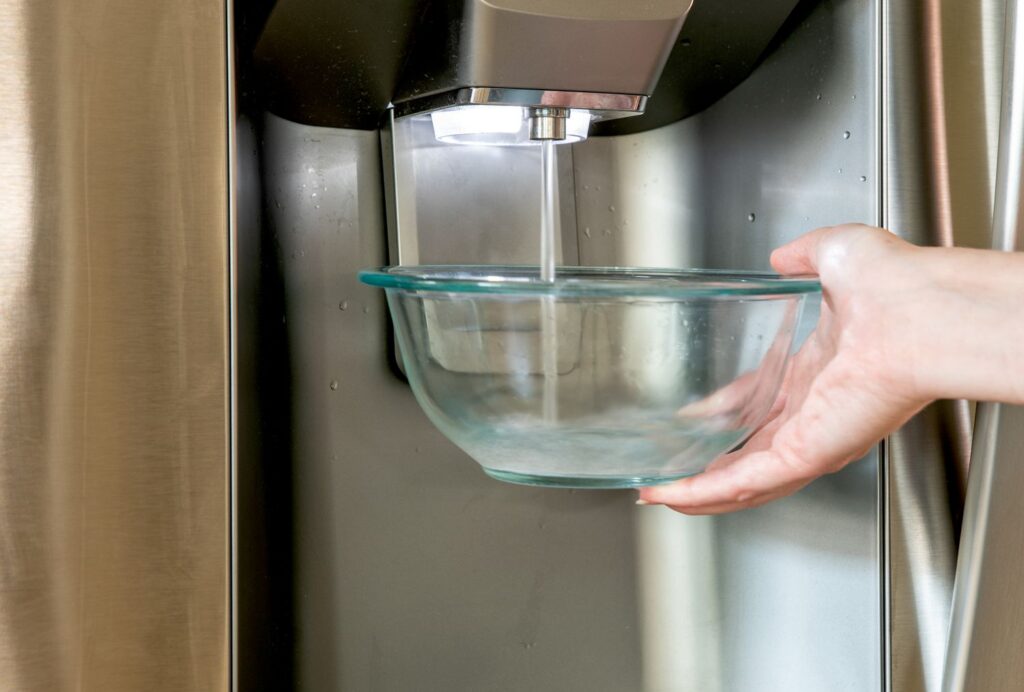
Preparing Your Espresso Machine for Descaling
- Turn off the machine and allow it to cool if it’s been recently used.
- Remove any coffee grounds or pods from the machine.
- Empty the water reservoir and fill it with the appropriate amount of descaling solution.
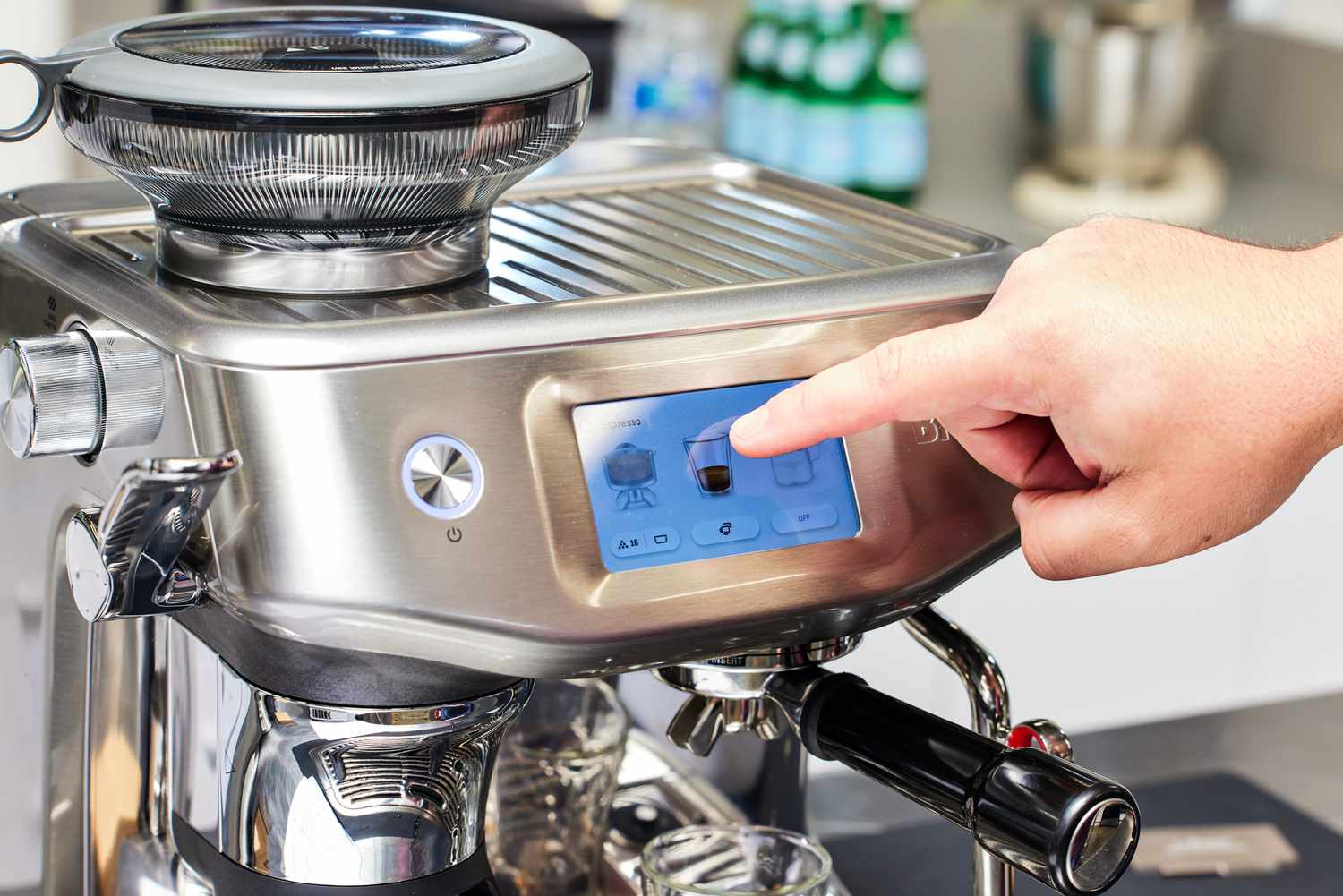
Running the Descaling Solution Through the Machine
- Turn on the machine and start the descaling cycle according to the manufacturer’s instructions.
- Allow the solution to run through the machine, including the steam wand if applicable.
- Let the solution sit for a few minutes to break down the scale effectively.
Rinsing and Flushing the Machine After Descaling
- After the descaling solution has passed through, thoroughly rinse the water reservoir and refill it with clean water.
- Run a full cycle with clean water to flush out any remaining descaling solution.
- Repeat the rinse cycle if necessary to ensure all traces of the descaling agent are removed.
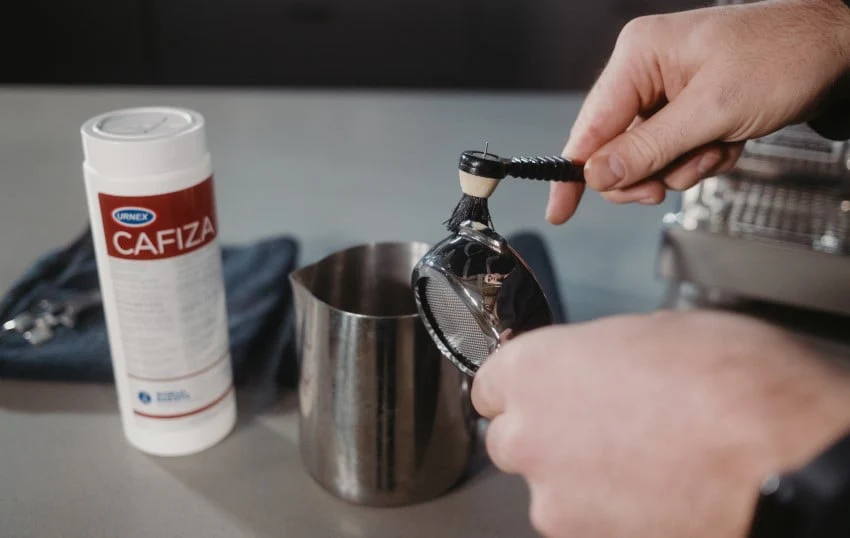

Descaling Frequency for Different Types of Espresso Machines
Different types of espresso machines require varying descaling schedules. Here’s a general guideline:
- Descaling Guidelines for Automatic Espresso Machines
- Automatic machines, such as bean-to-cup models, typically have built-in descaling programs. Descale these machines every 3-6 months, depending on water hardness and usage.
- Descaling Frequency for Semi-Automatic and Manual Machines
- Semi-automatic and manual machines need descaling every 2-4 months. Because these machines lack automatic descaling programs, users should manually run a descaling solution through the group head and steam wand.
- Descaling Instructions for Super-Automatic Machines
- Super-automatic machines have complex internal systems. They usually have descaling prompts, and users should follow these alerts to avoid damaging internal components.
Top Mistakes to Avoid When Descaling an Espresso Machine
Avoiding common mistakes during the descaling process is key to ensuring your machine remains in good condition.
- Using the Wrong Descaling Solution Always use a descaling solution recommended by your machine’s manufacturer. Using vinegar or homemade solutions can corrode internal parts and void your warranty.
- Ignoring Manufacturer Guidelines Different machines have different descaling procedures. Always refer to your machine’s manual to avoid damaging delicate components.
- Skipping the Final Rinse Failing to thoroughly rinse your machine after descaling can result in a lingering chemical taste in your coffee. Make sure to flush the machine with clean water several times.
Best Descaling Products for Espresso Machines
Choosing the right descaling product is essential for maintaining your espresso machine.
Descaling Solutions for Home Use
For home use, consider solutions like the Durgol Swiss Espresso Descaler, which is gentle on machines and effective at removing buildup.

Commercial Descaling Products for Heavy Usage
If you operate a commercial espresso machine, opt for stronger descalers such as Urnex Dezcal, which is designed for heavy-duty descaling.
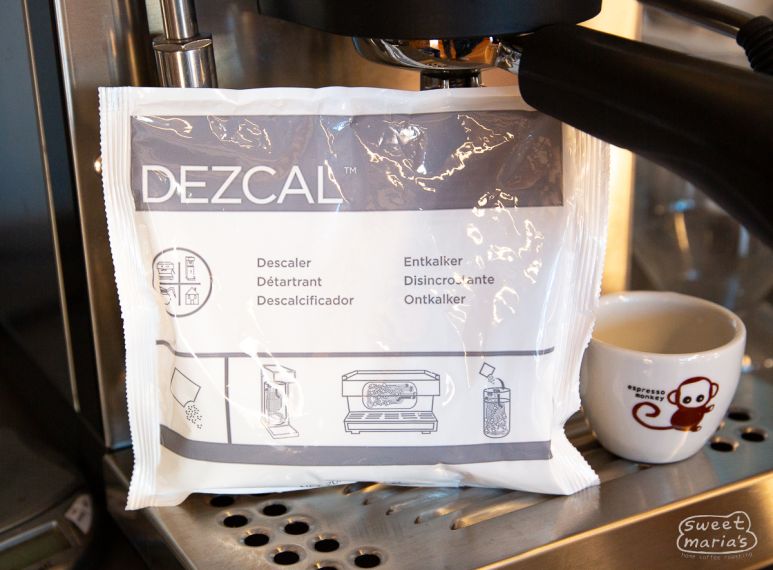
Natural Alternatives for Descaling
Natural alternatives like citric acid or lemon juice can be used occasionally, but they should not replace manufacturer-recommended solutions.

FAQ: Answering Common Questions About Espresso Machine Descaling
To provide even more value, here are answers to common descaling questions:
Can I Use Vinegar to Descale My Espresso Machine?
While vinegar is a popular homemade solution, it’s not recommended for most machines because it can corrode internal components and leave a strong odor.
What Happens if I Don’t Descale My Espresso Machine?
If you don’t descale regularly, your machine may become clogged, resulting in poor water flow, uneven brewing temperatures, and ultimately, machine failure.
How Long Does the Descaling Process Take?
Descaling typically takes 20-30 minutes, depending on your machine’s complexity and the level of buildup.
Troubleshooting: Issues After Descaling and How to Fix Them
If you encounter problems after descaling, try these solutions:
Why Is My Espresso Machine Still Making Noises After Descaling?
Residual scale may still be present. Run another descaling cycle or check for clogs in the water line.
What If My Coffee Tastes Off After Descaling?
This could be due to incomplete rinsing. Run additional rinse cycles with fresh water to remove any remaining descaling solution.
Disclosure: Our blog contains affiliate links to products. We may receive a commission for purchases made through these links. However, this does not impact our reviews and comparisons. We try our best to keep things fair and balanced, in order to help you make the best choice for you.





